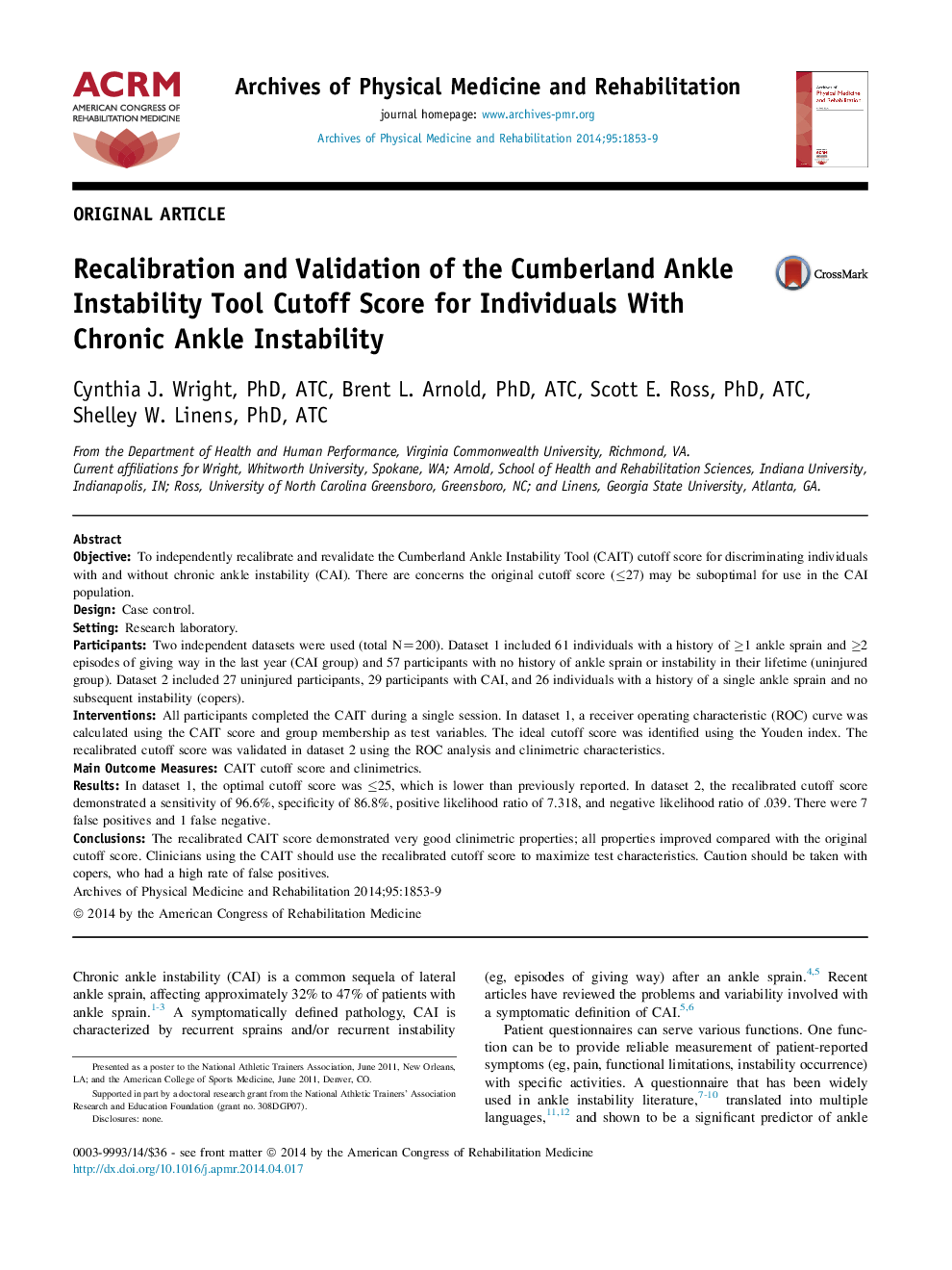| کد مقاله | کد نشریه | سال انتشار | مقاله انگلیسی | نسخه تمام متن |
|---|---|---|---|---|
| 3448748 | 1595692 | 2014 | 7 صفحه PDF | دانلود رایگان |
ObjectiveTo independently recalibrate and revalidate the Cumberland Ankle Instability Tool (CAIT) cutoff score for discriminating individuals with and without chronic ankle instability (CAI). There are concerns the original cutoff score (≤27) may be suboptimal for use in the CAI population.DesignCase control.SettingResearch laboratory.ParticipantsTwo independent datasets were used (total N=200). Dataset 1 included 61 individuals with a history of ≥1 ankle sprain and ≥2 episodes of giving way in the last year (CAI group) and 57 participants with no history of ankle sprain or instability in their lifetime (uninjured group). Dataset 2 included 27 uninjured participants, 29 participants with CAI, and 26 individuals with a history of a single ankle sprain and no subsequent instability (copers).InterventionsAll participants completed the CAIT during a single session. In dataset 1, a receiver operating characteristic (ROC) curve was calculated using the CAIT score and group membership as test variables. The ideal cutoff score was identified using the Youden index. The recalibrated cutoff score was validated in dataset 2 using the ROC analysis and clinimetric characteristics.Main Outcome MeasuresCAIT cutoff score and clinimetrics.ResultsIn dataset 1, the optimal cutoff score was ≤25, which is lower than previously reported. In dataset 2, the recalibrated cutoff score demonstrated a sensitivity of 96.6%, specificity of 86.8%, positive likelihood ratio of 7.318, and negative likelihood ratio of .039. There were 7 false positives and 1 false negative.ConclusionsThe recalibrated CAIT score demonstrated very good clinimetric properties; all properties improved compared with the original cutoff score. Clinicians using the CAIT should use the recalibrated cutoff score to maximize test characteristics. Caution should be taken with copers, who had a high rate of false positives.
Journal: Archives of Physical Medicine and Rehabilitation - Volume 95, Issue 10, October 2014, Pages 1853–1859
